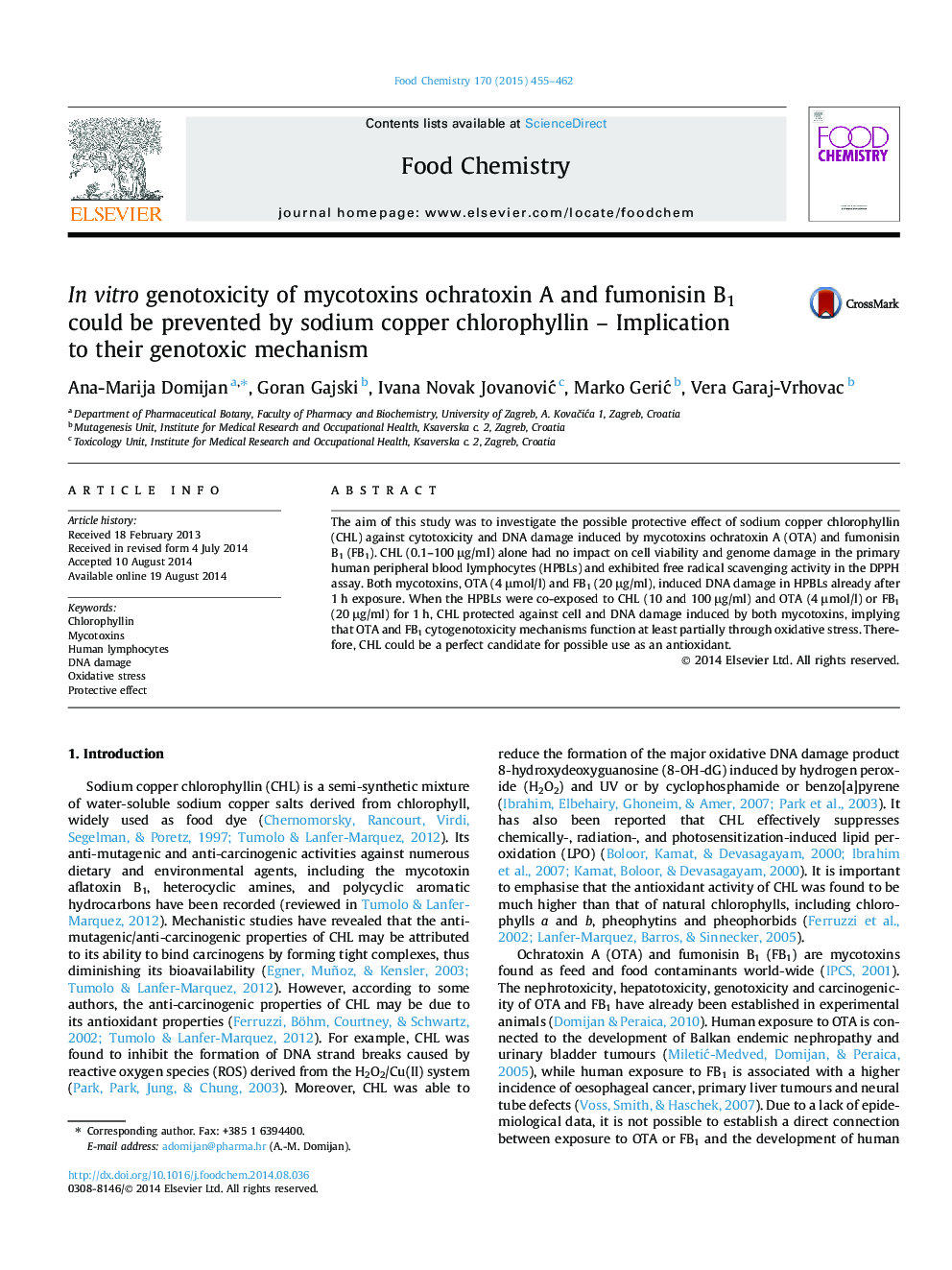| Article ID | Journal | Published Year | Pages | File Type |
|---|---|---|---|---|
| 1185576 | Food Chemistry | 2015 | 8 Pages |
•Cytogenotoxicity of ochratoxin A (OTA) and fumonisin B1 (FB1) was studied.•Chlorophyllin (CHL) was used to check involvement of oxidative stress.•CHL was not cytogenotoxic and demonstrated anti-oxidative properties.•CHL prevented cell death and DNA damage induced by OTA, FB1 and H2O2.•Thus, oxidative stress is involved in the mechanism of toxicity of OTA and FB1.
The aim of this study was to investigate the possible protective effect of sodium copper chlorophyllin (CHL) against cytotoxicity and DNA damage induced by mycotoxins ochratoxin A (OTA) and fumonisin B1 (FB1). CHL (0.1–100 μg/ml) alone had no impact on cell viability and genome damage in the primary human peripheral blood lymphocytes (HPBLs) and exhibited free radical scavenging activity in the DPPH assay. Both mycotoxins, OTA (4 μmol/l) and FB1 (20 μg/ml), induced DNA damage in HPBLs already after 1 h exposure. When the HPBLs were co-exposed to CHL (10 and 100 μg/ml) and OTA (4 μmol/l) or FB1 (20 μg/ml) for 1 h, CHL protected against cell and DNA damage induced by both mycotoxins, implying that OTA and FB1 cytogenotoxicity mechanisms function at least partially through oxidative stress. Therefore, CHL could be a perfect candidate for possible use as an antioxidant.
